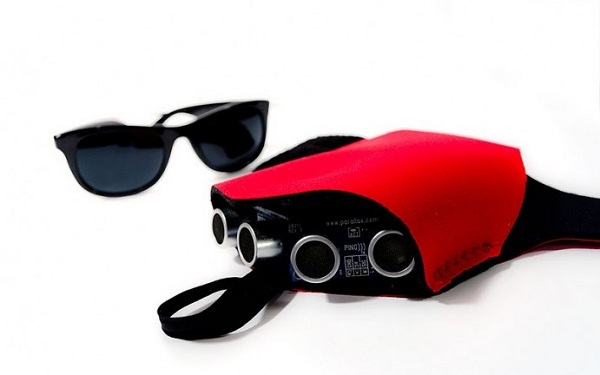It is a bit of a surprise that no one thought until now to design a device that uses a similar principle to the one employed by bats to move around. Tacit represents a sonar that may revolutionize the way blind people interact with the surrounding environment.

Tacit, as the Hand-Mounted Haptic Feedback Sonar Obstacle Avoidance Asstance Device is nicknamed, is a device designed by Steve Hoefer of Grathio Labs. Currently the device is in the concept stage and only a prototype has been built. It is attached to the hand by using a loop and a Velcro system. The 4 tubes featured in front of the device send and receive ultrasounds that are transmitted to the Arduino micro-controller. The entire assemble is powered by a 9 volt battery.
Depending on how far objects are from the device, the user gets tactile feedback on his hand at a certain frequency. More precisely, when the objects are further away from the hand, the tactile feedback has a low frequency. On the contrary, this frequency increases as the distance decreases. As the response time of the device is very low, blind persons can quickly estimate the distance to the objects.
The need for such a product appeared as most of the obstacles are placed below waist level. Of course, Tacit could not be used on streets or in open fields, but at home, it could save blind people a lot of time. With Tacit, it is possible to detect objects that are placed at a distance ranging between 2 cm and 3.5 meters from the hand.
Since it is designed as a gauntlet, Tacit will not interfere with any objects. This designed was preferred by Steve Hoefer despite the fact that the palm features more neural terminations than the back of the hand. When using this gauntlet, blind persons are still able to grip things such as cups. The designer admits that there is room for improvement, and since this a prototype, we can do nothing else but believe him.
If you liked this post, please check the virtual cane sonar and the fish locating wristwatch.










